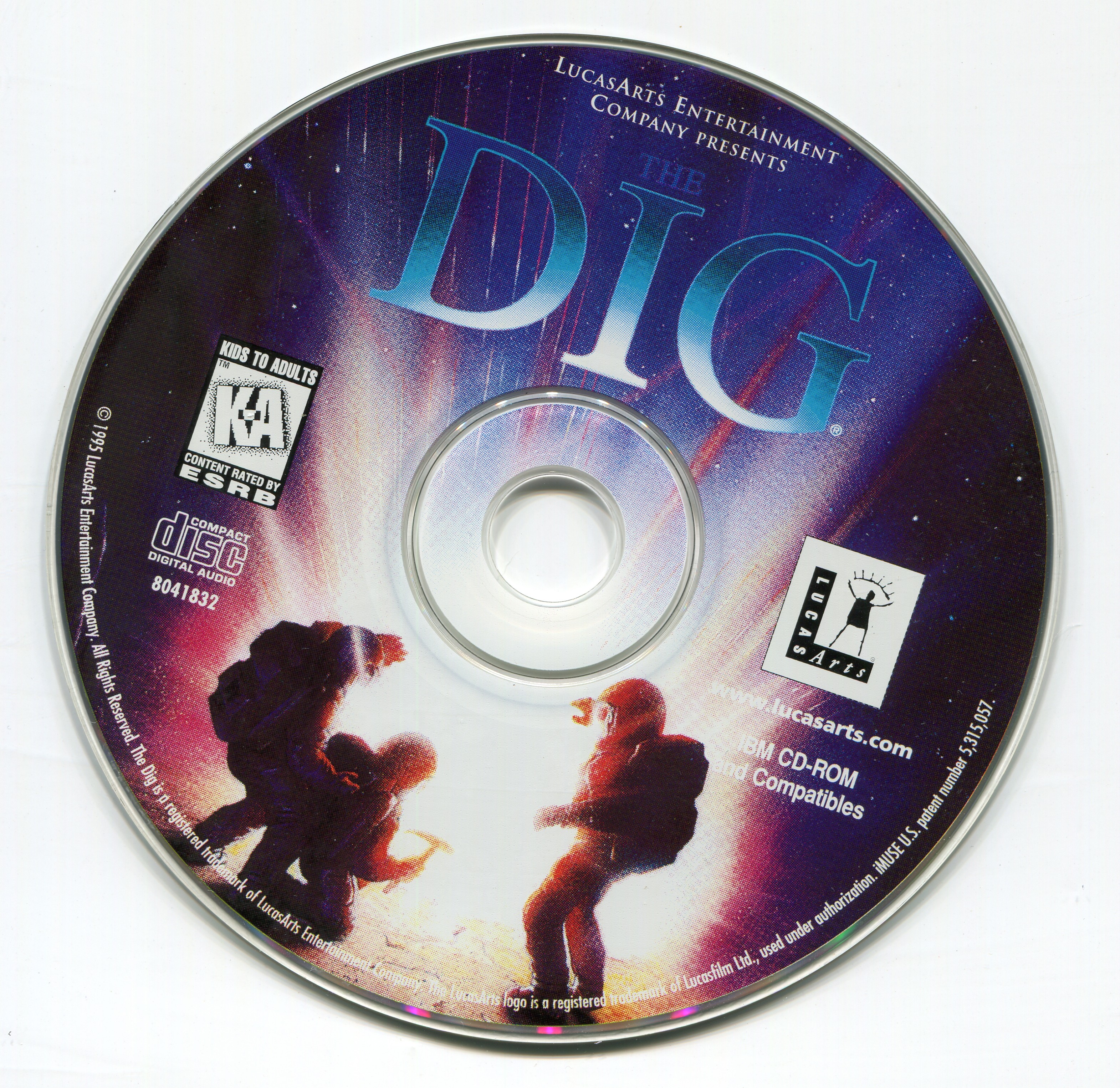 The Dig
The Dig
Released: 1995
Published by: LucasArts
Developed by: LucasArts
Author(s): Sean Clark, William Tiller, Gary Brubaker, Livia Knight, Mark Crowley, Michael Land, Clint Bajakian, Brian Moriarty, Steven Spielberg, Orson Scott Card, William Eaken, Peter Chan, Adam Schnitzer, Kevin Boyle, Sean Turner, Charlie Ramos, Graham Annable, David DeVan, Chris Miles, Geri Bertolo
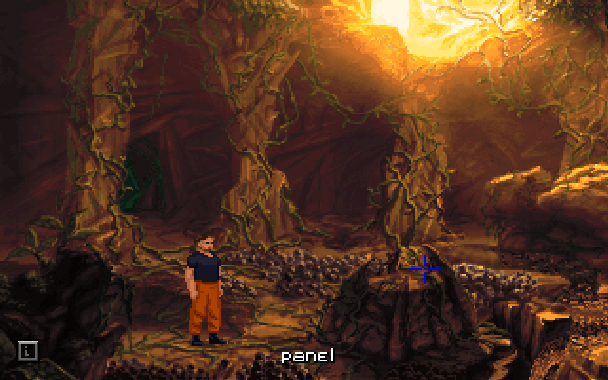
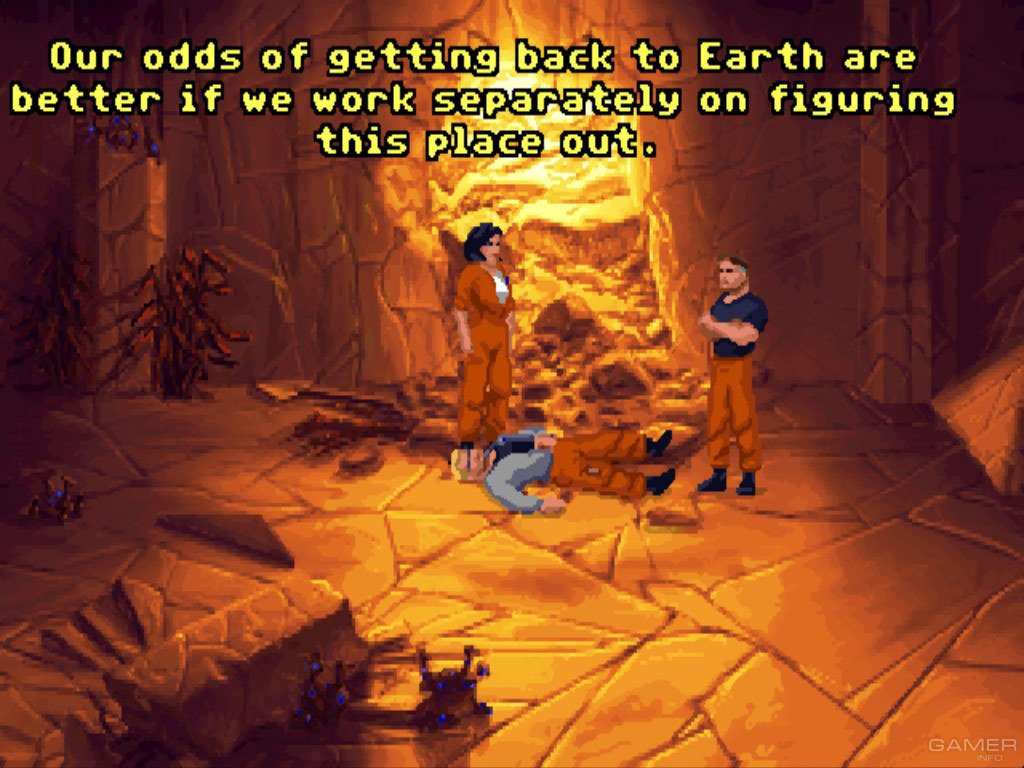
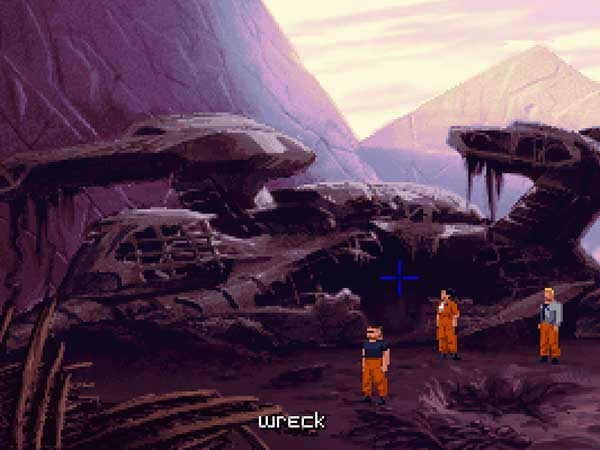
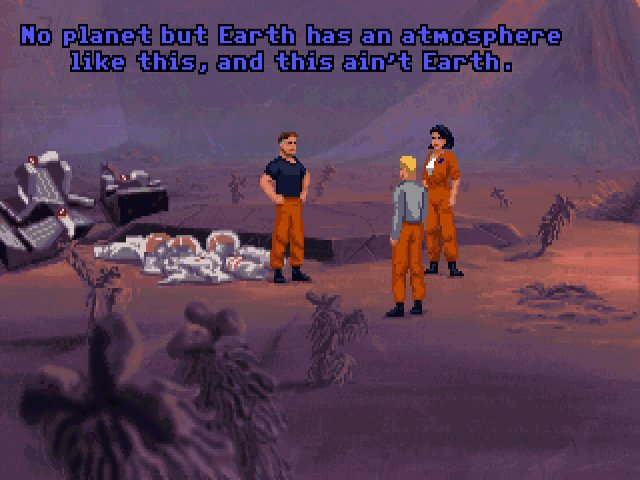
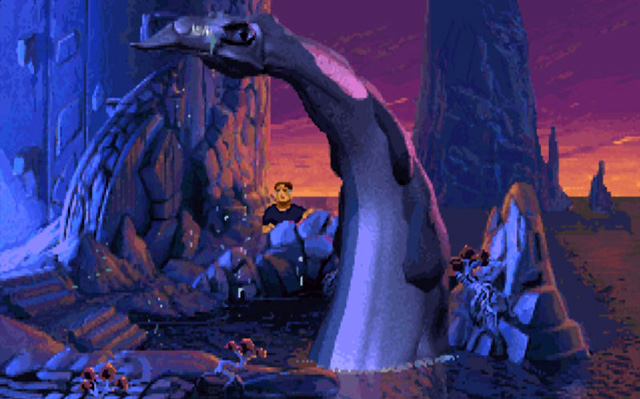
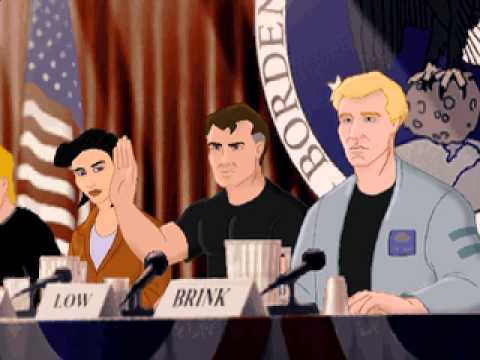
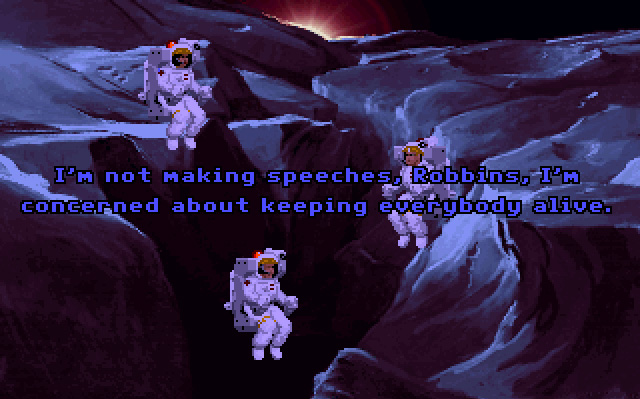
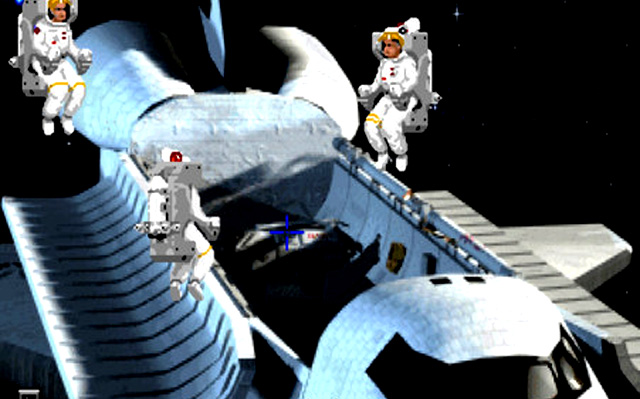
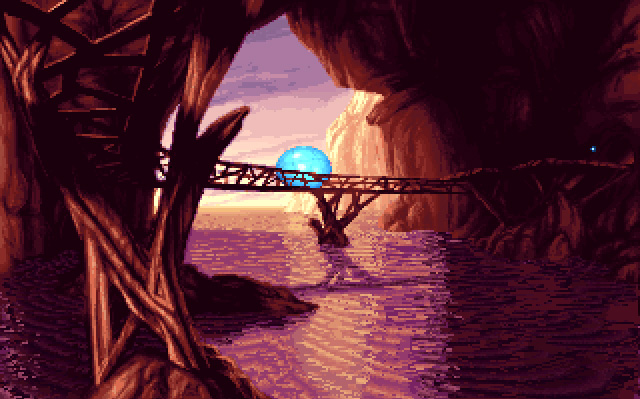
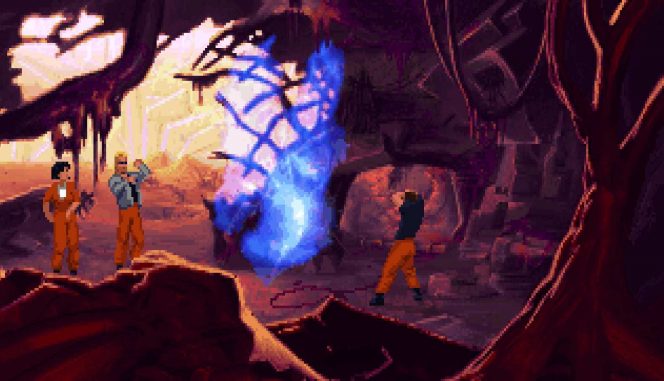
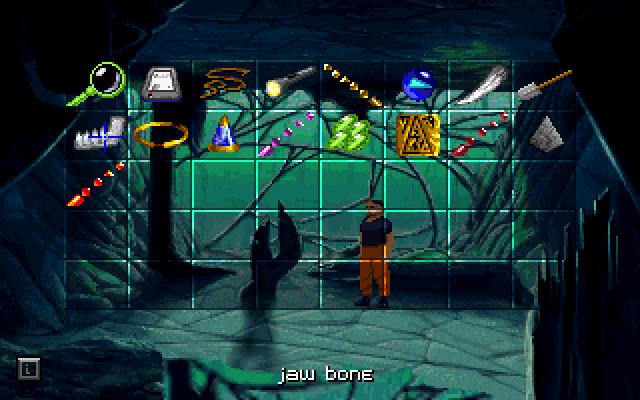
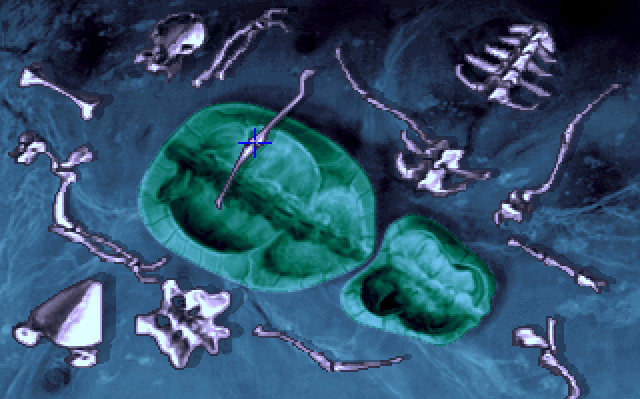
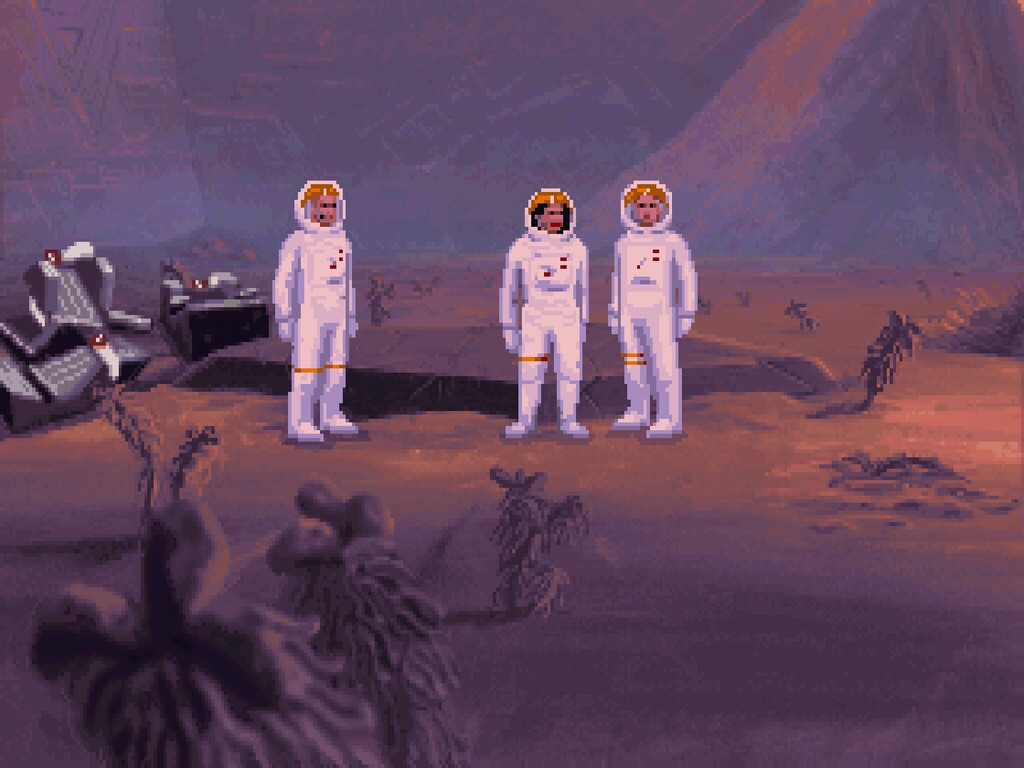
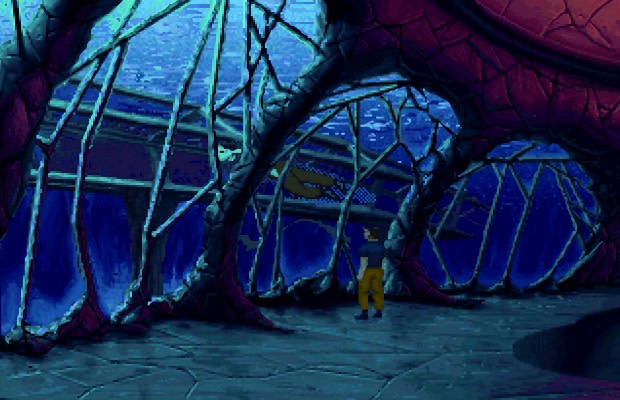
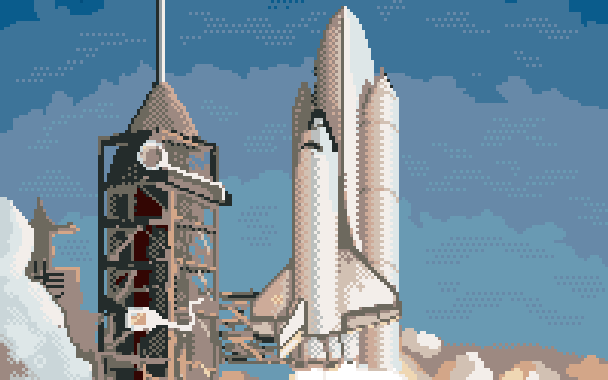
The 256-colour SVGA graphics are breathtaking
Introduction
The Dig was originally conceived to be a full motion picture, but costs proved to be prohibitive. Written and developed by Sean Clark based on an idea by Steven Spielberg, The Dig was an epic space adventure with a high budget. It's a point-and-click adventure of the ilk expected by LucasArts, but takes a more serious approach than other games that came before it. The Dig features almost 200 locations and hundreds of puzzles. Actors and actresses were employed to do the voiceovers in the game, in addition to an orchestra for the awesome musical score.
Did You Know?
Interactive fiction author Brian Moriarty who was one of the project leaders for The Dig previously worked on Lucasfilm Games' Loom and gave some input into Indiana Jones & The Fate of Atlantis.The storyline of The Dig is that a chosen group of scientists and a journalist are sent on a mission to explore an asteroid called Attila that's on a collision course with Earth. As they conduct their investigations, they end up on a desert planet with seemingly no way to get home again. Your crew must interact with the environment and objects they find to learn all they can and find a way home.
The game was the eleventh title from LucasArts to use the SCUMM (Script Creation Utility for Maniac Mansion) game engine.
Intro sequence
The Dig was re-released to the German market in 1996 (Softgold) and again in 2000 (PC Games Plus) and 2001 (THQ). To my knowledge these re-releases were all game version 1.01, and were unchanged from the original release aside from the box packaging.
System Requirements
| System Requirements | Intel 486DX2-66 CPU minimum for DOS use (Pentium 60 for Win95 use), DOS 6.0, 2x CD-ROM, 8 MB of RAM for DOS use (16 MB if running from Win95) Graphics support for SVGA graphics only (VLB/PCI card recommended) Audio support for Sound Blaster, SB Pro, SB16, AWE32, Pro Audio Spectrum, Ensoniq SoundScape, Gravis UltraSound, Roland MT-32/LAPC-I and General MIDI. Keyboard and mouse required. Joystick is also supported. |
|---|---|
| Original Media | One CD-ROM disc. |
| Installed Size (MB) | 1 MB (minimum install, with game running from CD-ROM disc) |
From where can it be run?
The game must be installed to your hard disk, though it can take up as little as 1 MB of disk capacity if you choose the minimum install option. It will run either from pure DOS or a Windows 95 DOS command prompt. When installed under Windows, you will have two icons entitled "The Dig" and "The Dig 16MB+". Click on the one based on your installed RAM size. Bear in mind that if you only have 8 MB total memory, running The Dig from within Windows 95 means Windows itself will be using between 1.5 and 4 MB of RAM, leaving a much smaller amount for the game to make use of. It is therefore recommended you run the game from pure DOS, especially if you have less than 16 MB of total memory installed.
If you have issues running the game, the CD-ROM comes with a utility that allows you to create a Bootmaker utility, called ALLBOOT.EXE:
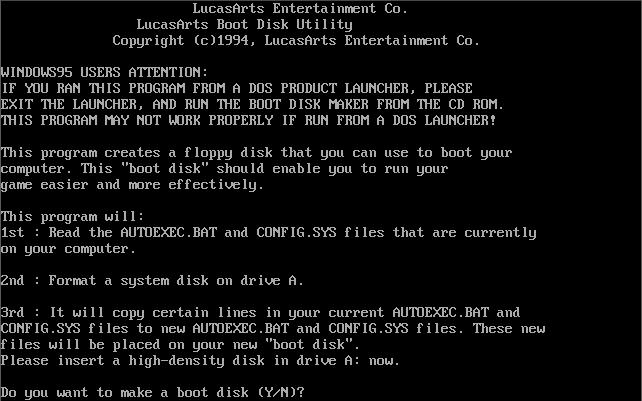
Copy Protection
The Dig has no copy protection, but does require the original CD-ROM to be in its drive and accessible for the game to start.
How to Setup
From the CD-ROM, if you are installing or running the game from DOS, navigate to the DIG subdirectory, and run DIG.EXE. This will show The DIG Launch Utility:
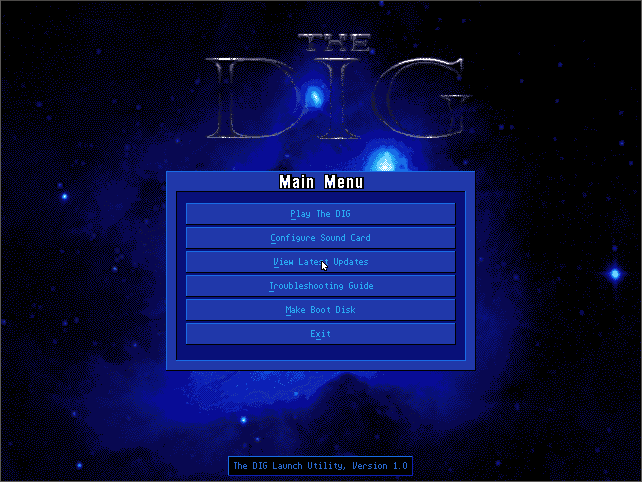
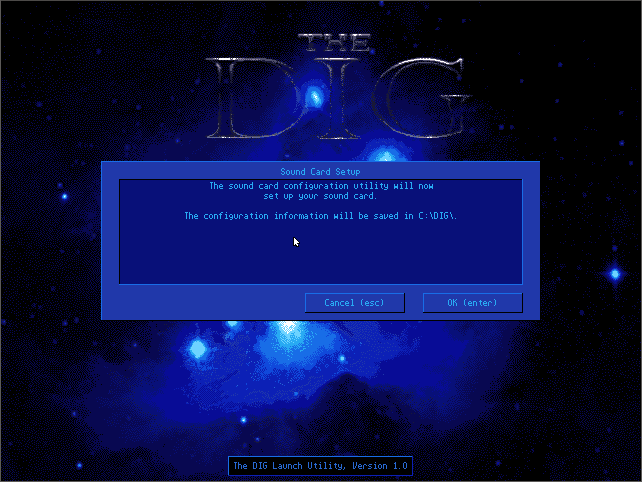
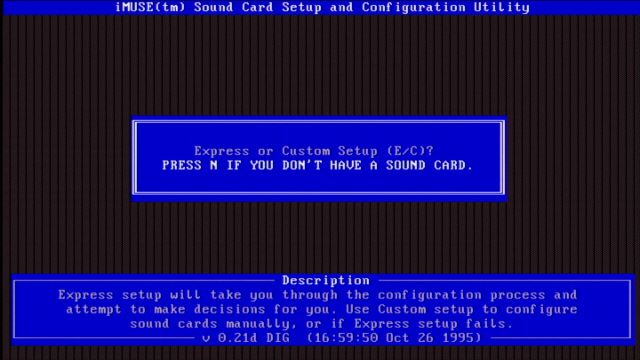
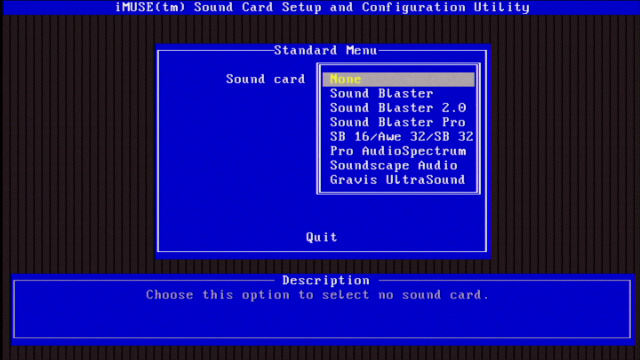
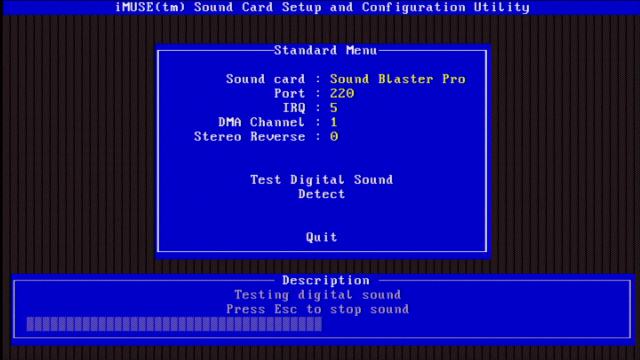
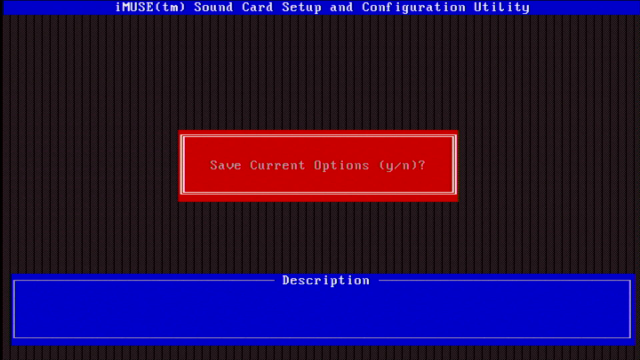
The audio configuration settings are stored in C:\DIG in a file called IMUSE.INI. The file is not text-readable or editable. To amend your configuration, re-run DIG.EXE from the CD-ROM and choose 'Configure Sound Card' again.
Problems
Symptom: DOS4GW throws an error when I attempt to start the game.
Cause: These are common, which is why LucasArts provided 4 versions of the DOS4GW DOS extender on the CD-ROM.
Resolution: Try running one of the batch files in the Support directory of the CD-ROM and try again. The versions provided are 1.80, 1.92, 1.95 and 1.97. The default version on game version 1.01 is DOS4GW 1.97.
Keys
| ESC - Bypass the current cutscene | Ctrl-T - Toggle between Text & Voice, Text only and Voice only |
| Space - Pause / unpause gameplay | . (period) - Move to the next sentence (if text is being shown) |
| Alt-X - Quit the game | W - Change cursor to 'walk' (the default) |
| F5 - Display Save/Load Control Panel | E - Change cursor to 'Examine' (magnifying glass) |
| Return/Enter - (same as left-mouse click) | L - Examine item on the cursor |
| Tab - (same as right-mouse click) | C - Communications mode / use the Pen Ultimate |
| Arrow keys - move the on-screen cursor | I - Show inventory |
To Quit the Game
During gameplay, press ALT-X to quit the game. When prompted, confirm by hitting 'Y'.
Supporting Documents
Save Games
You can save and load your progress at any time during the game outside of the cut-scenes. To do so, simply press the F5 key to bring up the Save and Load Control Panel. To save your current game, click the "Save" button. When saving there are a number of available 'slots' - click on an empty one and you will be prompted to enter the name of your save game. To load a game at a later time, click the "Load" button followed by selecting one of the slots that contain a save game.
The Save/Load Control Panel can also be used to adjust your music/voice/sound effects volume. You can also choose to display text alongside any speech that occurs in the game, and adjust the speed at which the voice text disappears.
Versions of the game known to exist
| Version | Date | Comments |
|---|---|---|
| 1.00 | November 1995 | Initial public release. No DirectX shipped with this release. |
| 1.01 | September 1997 | Minor bug fixes. Comes with DirectX 6.02. Numerous files have changed size: DIG.EXE (37 KB larger), IMUSE.EXE (53 KB larger), DIGTXT.TRS (same size but updated), FONT1.NUT, FONT2.NUT and FONT3.NUT (updated), new file in VIDEOS subdirectory called DIG.TRS (45 KB). ALLBOOT.EXE (the Boot disk maker utility) is smaller by 35 KB. This version was also bundled on the LucasArts Archives Vol.III, along with Star Wars: Dark Forces, Afterlife, Full Throttle, and Monkey Island Madness. |
| - | June 2009 | The Dig was launched on the Steam platform. |
Original Disc Contents
The game disc has no specific volume label. Here are its contents:
Disc 1 of 1 version 1.00 (CD-ROM):
DIG <DIR> 19-10-1995 17:08 <Contents of DIG subdirectory> VIDEO <DIR> 19-10-1995 17:08 |
|
Installed Directory Contents
Once installed, the following directory structure exists in the game directory:
Directory of C:\DIG |
